The human civilization started from the hunter gathered group. They stayed in the group to deal with a predator, basically for survival. The increasing number of people in a group needed governance.
So, the concept of power/ship/emperor emerged. As the groups started to become big, the hierarchy system emerged and the world witnessed the first human civilization Sumerian(Ancient Mesopotamia) and the Indus valley civilization. Since then there were many empires that emerged throughout human history.
The word ‘Empire’ symbolizes a kind of domestic and international power formed with the lines dissimilar from all the preferred British traditions of foreign and homebody, a hundred years ago.
Now, it’s the political contrive, where one state or a series of states dominated by one single state, ruled by an emperor or without any emperor.
Here are the top 10 Largest Empires in Human History.
10. The Portuguese Empire
Content
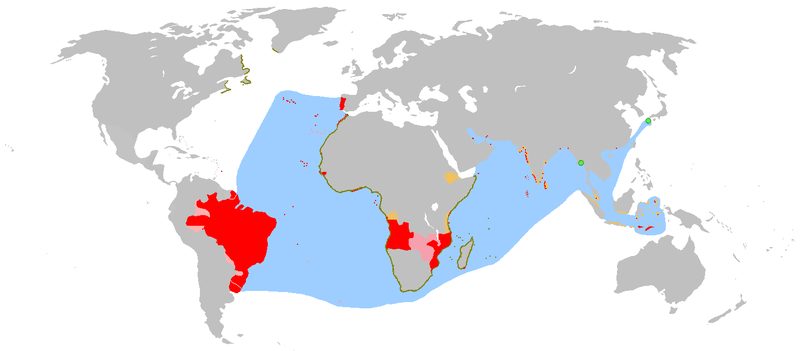
| Zenith in history: | 1900s |
| Area of Realm: | 4,000,000 square miles |
| Greatest Extent: | 10.4 million square km |
The Portuguese Empire is also known by the name The Portuguese Overseas. It is one of the largest and longest empires of human history.
It was originally one of the first kingdom fightings against the Muslim rulers. It did not have enough economic opportunities and natural resources to work with.
It is the 1st Colonial Empire of the Renaissance. It existed since the capture of Ceuta (1415 C.E) till the grant of sovereignty to East Timor (2002 C.E).
It was able to lead the colonial era in the 16th century. It colonized many islands, established Brazil’s territory, and few areas of Africa.
It lasted for about 5 centuries, supposedly longest amongst French, Spanish, and Britain Empires.
Portuguese is the official language of the other seven former colonies of Portugal. Now, it is spoken around half of South America.
It extends for about 10.4 million square km, which started during the 1900s occupying a total area of about 4,000,000 square miles.
9. The Abbasid Caliphate
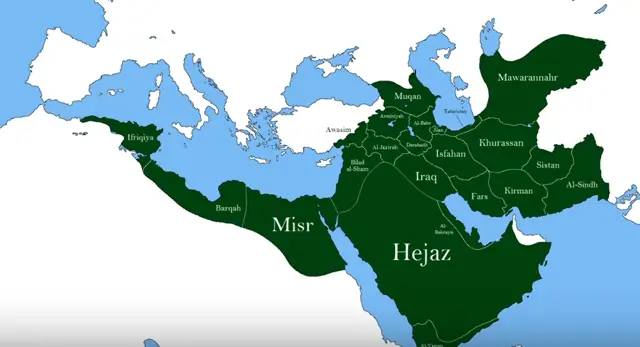
| Zenith in history: | 9th Century |
| Area of Realm: | 4,300,000 square miles |
| Greatest Extent: | 11.1 million square km |
Abbasid ruled over the Islamic Empire after defeating the Umayyads and turned the Arab empire of Umayyad into the empire of Muslim.
The government of Caliphate was primarily centralized in Kufa. They were located in Baghdad ruling as Caliphs after assuming their authority over the Umayyads (750 C.E).
A Caliph is mostly the son or the closest family member (male).
It extends for about 11.1 million square km, which started during the 9th century C.E occupying a total area of 4,300,000 square miles.
8. The French Colonial Empire
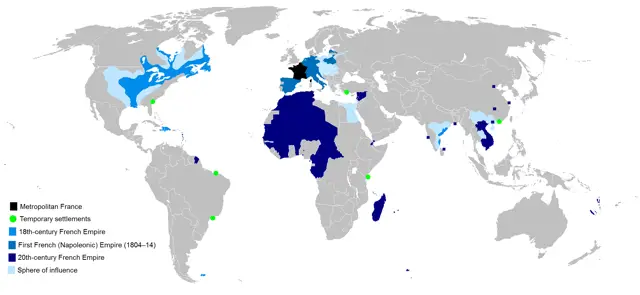
| Zenith in history: | 1918-1939 CE |
| Area of Realm: | 4,750,000 square miles |
| Greatest Extent: | 11.5 million square km |
The Empire of France was comprised of the colonies of overseas territories, and dependent states which were under the French dominion, since the sixteenth century. It includes New France-French West Indies-French Guiana.
It got its power since the seventeen century, though there was no decolonization until 1960. It got victory over and also lost territories in India and North America in 17th-18th Centuries.
It extends for about 11.5 million square km, occupying 4,750,000 square miles and having 110 million people.
7. The Qing Dynasty

| Zenith in history: | 1700s CE |
| Area of Realm: | 5,000,000 square miles |
| Greatest Extent: | 14.7 million square km |
Qing Dynasty also goes by the name Manchu Dynasty or Qing Empire. It was established around 1936 C.E and ruled China for about 3 centuries ( 1644-1912 C.E).
It was believed to have prospered at its initial stage, but went on to become fragile due to many attacks and disasters near the end.
Around the end of this dynasty, several Chinese cities were taken over by the forces of Manchuria, defeating the Army of Ming.
In the time of colonization, China was able to expand its population and its borders. It also stayed isolated during that age.
It is known to be the last imperial dynasty of China. It extends for about 14.7 million square km, occupying about 5,000,000 square miles.
6. The Yuan Dynasty
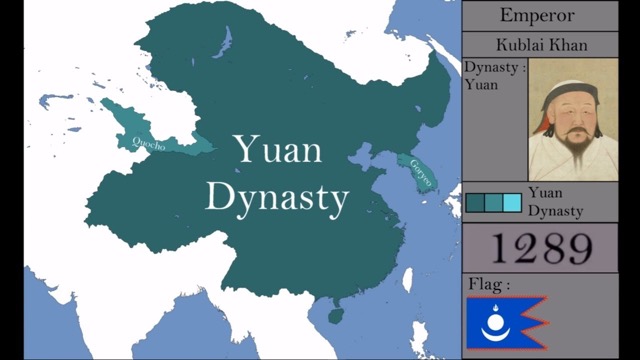
| Zenith in history: | 1300 CE |
| Area of Realm: | 5,417,000 square miles |
Yuan Dynasty from China had Genghis Khan as its founder. It was amongst the biggest empires established by Kublai Khan, the grandson of Genghis Khan.
It ruled over from 1279 CE to 1368 CE. It was the first empire to make paper money as their main currency.
This empire was introduced to the Europeans by an Italian traveller named Marco Polo. People of this empire initially started following Shamanism as their religion, but it could not last for long. They then accepted and got converted into Islam.
Though this dynasty was able to unify the territory and develop the areas of technical and natural sciences.The ending years of this dynasty was filled with famine and struggle.
The successors of Kublai Khan were not able to stick with their powers and were seen as Chinese by the Mongols of the Middle Kingdom.
This dynasty started during 1300 CE, occupying a total area of around 5.417,000 square miles.
5. The Umayyad Caliphate
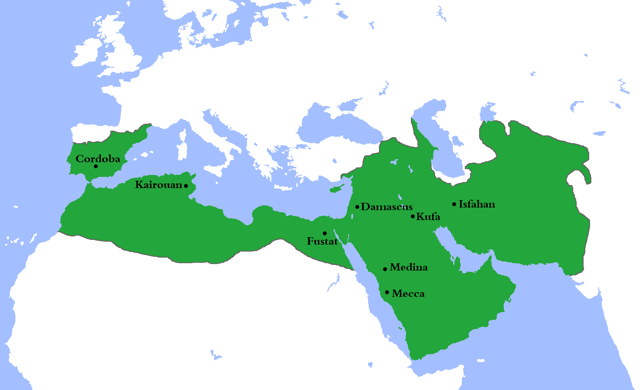
| Zenith in history: | 700 CE |
| Area of Realm: | 5,800,000 square miles |
| Greatest Extent: | 11.1 million square km |
The Umayyad Caliphate was set up by Muawiya, a Syrian governor after the demise of Muhammad. It was established as the second caliphate amongst the major caliphates.
It was able to make many contributions to the Empire of Islam. It unified the large empires and their cultures, established an official language – Arabic, built various buildings related to Islamic history.
During their reign, the territory of the caliphates was able to grow rapidly. It became the largest unitary state in world history.
Despite these achievements, Umayyad Caliphate had many rebellions against them. This dynasty was not fully supported by the Muslim community.
Some of the Muslims believed that the members of Muhammad’s followers instead of the Umayyads are to rule this dynasty.
It extends for around 11.1 million square km, occupying 5,800,000 square miles.
4. The Spanish Empire
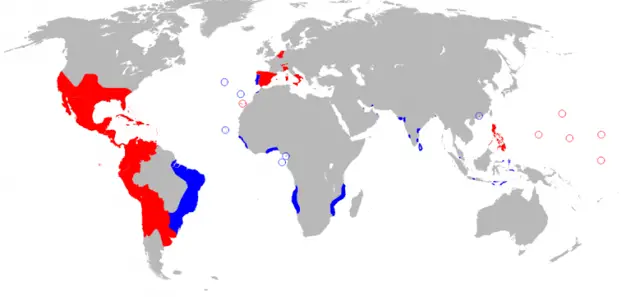
| Zenith in history: | 1790s CE |
| Area of Realm: | 7,500,000 square miles |
| Greatest Extent: | 13.7 million square km |
The Empire of Spain was the most powerful and biggest empire of the world around the 17-18th century. It is also known as the Spanish Monarchy.
Spanish Empire was able to create trade routes, trading goods among the colonies in America. Common languages spoken here were Spanish, Latin, Italian, Basque, etc. It was able to improve its economic condition by trading spices, minerals, and laborers all around the globe.
It existed from 1492 CE to 1975 CE. It extends for about 13.7 million square km, occupying a total area of 7,500,000 square miles.
3. The Russian Empire

| Zenith in history: | 1860s CE |
| Area of Realm: | 8,833,000 square miles |
| Greatest Extent: | 22.8 million square km |
The Russian Empire covered around 3 countries. This empire came into rising as the powers of a rival like the Empire of Sweden, Empire of Ottoman and Persia started to decline.
It is the third-largest empire that has surpassed all the other empires except the Mongol Empire and the British Empire.
It over-ruled the west and south parts of Europe after defeating Napoleon. Tsars, the Russian emperors ruled this empire. They considered themselves as the king and ruled their people with that divine power.
It lasted for about 2 centuries ( 1721 – 1917 CE ), extending for about 22.8 million square km. It occupied a total area of about 8,833,000 square miles.
2. The Mongol Empire

| Zenith in history: | 1280 CE |
| Area of Realm: | 12,750,000 square miles |
| Greatest Extent: | 24 million square km |
The Mongol Empire expands from Central Asia to the Sea of Japan, covering Central Europe. And, from the northern part expands from Siberia to the Southwards and Eastwards into Indochina, Iranian Plateau, and the Indian Subcontinent. On the west, it expands to the Arabian Peninsula and the Levant.
This empire came into existence after unifying many nomadic tribes in the homeland of Mongol.
It is the second-largest empire that has surpassed all the other empires except British Empire.
The empire was able to grow swiftly under the leadership of Genghis Khan. He managed to send armies all over the places and unified different tribes from the east to the west.
It was the biggest adjoining land empire during the 13-14th century. It lasted for about 1 century ( 1206-1368 CE ), extending for about 24 million square km. It occupied a total area of about 12,750,000 square miles.
1. The British Empire
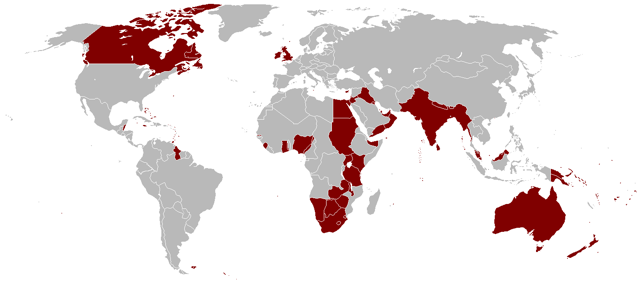
| Zenith in history: | 1920s CE |
| Area of Realm: | 13,000,000 square miles |
| Greatest Extent: | 35 million square km |
The British Empire’s territories were expanded all around the globe. An old phrase – ‘ The empire on which the sun never sets ’ which was basically made for the Spanish Empire is now used to describe the British Empire.
The Frist British Empire ( 1497 – 1763 ) evolved in the 16th Century, with large colonies in the West Indies, Canada, New Zealand, and America. Which ended with the American Revolution, where the British Empire lost colonies of America.
The second empire ( 1783 -1924 ) evolved in the 19th Century, with more than 400 million people and territory of 10 million square miles added to it. It was able to cover a massive portion of land in the world, including a large part of Africa and India.
Having the largest population and highest number of military, it was able to surpass all other empires and become the largest empire the world has seen.
This empire never stayed in a static state, it kept on changing and evolving. It did so reacting to the threats and events that occurred during its reign.
The achievement during this era was – awareness of freedom, equality, human dignity, political legacy, and unity among various cultures. People of this era many new opportunities as well.
Despite these achievements, people there were still not fully satisfied by the act of government, which resulted in various disputes.
Empire had very complex rules, attitudes, motives, and purposes. The rulers were taken from all over the world. Some of them did not even have an idea of how an Empire should be ruled.
It existed for about 3 centuries ( 1613-1920 CE), extending for about 35 million square miles. It occupied a total area of 13,000,000 square miles.
Conclusion:
Empires are ranked according to their Zenith and their area of Realm. These empires occupy the surface area from around 2% to 24% of the total surface area of the Earth.
Imperialism includes the expansion of territory, population, duration, economy, and sovereignty of a state.
Though the empires are ranked according to their land occupancy, it is a controversial act to actually calculate the empires on the basis of the area covered.
Even though the borders are not seen to be moving back and forth like before, the act of imperialism is supposedly alive to this day. But, talking in an official sense, there is no existence of empires in today’s world.
